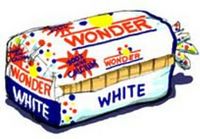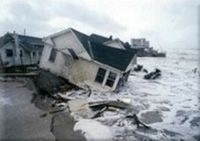It hurls a mean piano
This is why I read the Wall Street Journal, and this is why I have not given up on humanity quite yet:
A Scud It's Not, But the Trebuchet Hurls a Mean Piano
Giant Medieval War Machine Is Wowing British Farmers And Scaring the SheepBy Glynn Mapes, Staff Reporter of the Wall Street Journal
 ACTON ROUND, England--With surprising grace, the grand piano sails through the sky a hundred feet above a pasture here, finally returning to earth in a fortissimo explosion of wood chunks, ivory keys and piano wire.
ACTON ROUND, England--With surprising grace, the grand piano sails through the sky a hundred feet above a pasture here, finally returning to earth in a fortissimo explosion of wood chunks, ivory keys and piano wire.Nor is the piano the strangest thing to startle the grazing sheep this Sunday morning. A few minutes later, a car soars by - a 1975 blue two-door Hillman, to be exact - following the same flight path and meeting the same loud fate. Pigs fly here, too. In recent months, many dead 500-pound sows (two of them wearing parachutes) have passed overhead, as has the occasional dead horse.
 It's the work of Hew Kennedy's medieval siege engine, a four story tall, 30 ton behemoth that's the talk of bucolic Shropshire, 140 miles northwest of London. In ancient times, such war machines were dreaded instruments of destruction, flinging huge missiles, including plague-ridden horses, over the walls of besieged castles. Only one full-sized one exists today, designed and built by Mr. Kennedy, a wealthy landowner, inventor, military historian and - need it be said? - full-blown eccentric.
It's the work of Hew Kennedy's medieval siege engine, a four story tall, 30 ton behemoth that's the talk of bucolic Shropshire, 140 miles northwest of London. In ancient times, such war machines were dreaded instruments of destruction, flinging huge missiles, including plague-ridden horses, over the walls of besieged castles. Only one full-sized one exists today, designed and built by Mr. Kennedy, a wealthy landowner, inventor, military historian and - need it be said? - full-blown eccentric. ... [He and his neighbor] have spent a year and $17,000 assembling the trebuchet. They have worked from ancient texts, some in Latin, and crude wood-block engravings of siege weaponry.
... [He and his neighbor] have spent a year and $17,000 assembling the trebuchet. They have worked from ancient texts, some in Latin, and crude wood-block engravings of siege weaponry.The big question is why?
Mr. Kennedy looks puzzled, as if the thought hadn't occurred to him before. "Well why not? It's bloody good fun!" he finally exclaims. When pressed, he adds that for several hundred years, military technicians have been trying fruitlessly to reconstruct a working trebuchet.
- Cortez built one for the siege of Mexico City. On its first shot, it flung a huge boulder straight up - and then straight down, demolishing the machine.
- In 1851, Napoleon III had a go at it, as an academic exercise. His trebuchet was poorly balanced and barely managed to hurl the missiles - backward. ``Ours works a hell of a lot better than the Frogs', which is a satisfaction,'' Mr. Kennedy says with relish.
 ... The heart of the siege engine is a three-ton, 60-foot tapered beam made from laminated wood. It's pivoted near the heavy end, to which is attached a weight box filled with 5 tons of steel bar. Two huge A-frames made from lashed-together tree trunks support a steel axle, around which the beam pivots. When the machine is at rest, the beam is vertical, slender end at the top and weight box just clearing the ground.
... The heart of the siege engine is a three-ton, 60-foot tapered beam made from laminated wood. It's pivoted near the heavy end, to which is attached a weight box filled with 5 tons of steel bar. Two huge A-frames made from lashed-together tree trunks support a steel axle, around which the beam pivots. When the machine is at rest, the beam is vertical, slender end at the top and weight box just clearing the ground.When launch time comes, a farm tractor cocks the trebuchet, slowly hauling the slender end of the beam down and the weighted end up. Several dozen nervous sheep, hearing the tractor and knowing what comes next, make a break for the far side of the pasture. A crowd of 60 friends and neighbors buzzes with anticipation as a 30-foot, steel-cable sling is attached - one end to the slender end of the beam and the other to the projectile, in this case a grand piano (purchased by the truckload from a junk dealer).
"If you see the missile coming toward you, simply step aside," Mr. Kennedy shouts to the onlookers.
Then, with a great groaning, the beam is let go. As the counterweight plummets, the piano in its sling whips through an enormous arc, up and over the top of the trebuchet and down the pasture, a flight of 125 yards. The record for pianos is 151 yards (an upright model, with less wind resistance). A 112 pound iron weight made it 235 yards. Dead hogs go for about 175 yards, and horses 100 yards; the field is cratered with the graves of the beasts, buried by a backhoe where they landed.
 ...what spurred him to build one was, as he puts it, "my nutter cousin" in Northumberland, who put together a pint-sized trebuchet for a county fair. The device hurled porcelain toilets soaked in gasoline and set afire. A local paper described the event under the headline "Those Magnificent Men and Their Flaming Latrines."
...what spurred him to build one was, as he puts it, "my nutter cousin" in Northumberland, who put together a pint-sized trebuchet for a county fair. The device hurled porcelain toilets soaked in gasoline and set afire. A local paper described the event under the headline "Those Magnificent Men and Their Flaming Latrines."...One thing has frustrated Mr. Kennedy and his partner: They haven't found any commercial value to the trebuchet. ...
... Finally, there's the prospect of flinging a man into space - a living man, that is. This isn't a new idea, Mr. Kennedy points out: Trebuchets were often used to fling ambassadors and prisoners of war back over castle walls, a sure way to demoralize the opposition.
... In a series of experiments ... they've thrown several man-sized logs and two quarter-tone dead pigs into the air; one of the pigs parachuted gently back to earth, the other landed rather more forcefully.
Trouble is, an accelerometer carried inside the logs recorded a centrifugal force during the launch of as much as 20 Gs (the actual acceleration was zero to 90 miles per hour in 1.5 seconds). Scientists are divided over whether a man can stand that many Gs for more that a second or two before his blood vessels burst. ... More.
Technorati Tags: History, War, Weapons, Humor










































